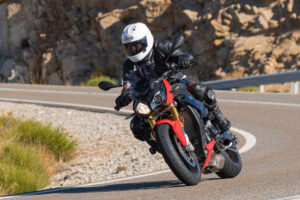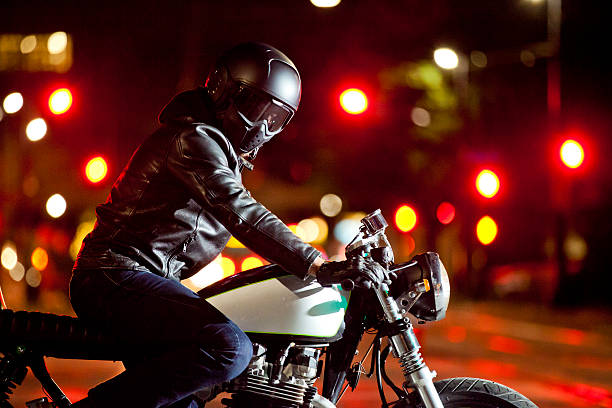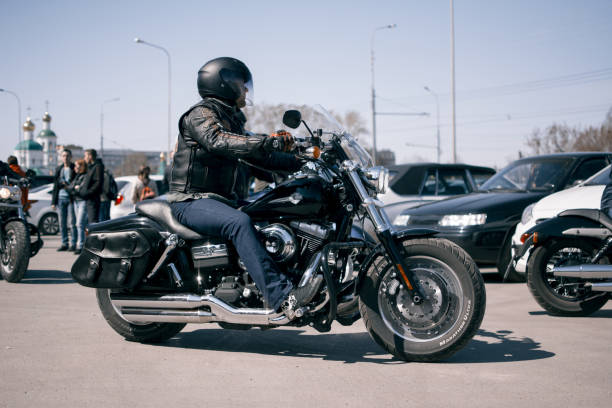Innovative Summer Motorcycle Cooling Vests
The cool vest for motorcycle riding is essential when the temperature rises and the road calls. These vests use innovative technology to regulate body temperature, keeping riders cool and focused when driving on a motorcycle. Their value is crucial given summer motorcycle journeys’ heat stress and dehydration concerns.

Different cooling vests use various technologies to control temperature. These vests aim to improve ride comfort, reduce heatstroke risk, and improve warm-weather riding. Evaporative, ice-pack, and phase change material (PCM) cooling vests have different benefits and care instructions.
Evaporative cooling vests are the most popular due to their simplicity and efficacy. Soak and wring out these vests to wear under a motorbike jacket. When water evaporates, it absorbs heat from the rider, lowering body temperature. Dry locations with high evaporation benefit from this vest. Since saturated air hinders evaporation, it is less effective under humid situations.
Conversely, ice-pack vests contain compartments for freezer-cooled ice or gel packs. These vests provide quick cooling assistance in all conditions, incredibly in humid locations where evaporative vests fail. It requires freezer access, making long-distance rides unfeasible without good preparation and infrastructure.
Phase change vests are more advanced. Materials in these vests dissolve and solidify at particular temperatures. They absorb body heat to melt PCM and release it to solidify it when the temperature drops. The technology maintains a temperature range near the body’s natural heat, offering comfort without the chilly shock of ice-pack vests.
A cooling vest’s fit and comfort under a motorbike jacket must be considered. A well-fitted vest ensures body-surface contact, improving cooling. Most motorcycle vests are lightweight and flexible to allow for maneuverability.
The vest will be exposed to wind, wetness, and wear and tear over several rides, so durability is crucial. Quality materials and craftsmanship make the vest an intelligent investment by extending its lifespan. Evaporative vests must be washed regularly to prevent mold formation, while PCM vests must be handled carefully to avoid capsule punctures.
In addition to cooling, these vests might have reflective materials for visibility and padded portions for fall protection. These safety measures can improve motorcycle gear protection without affecting temperature regulation.
Cooling vests are becoming necessary for professional motorcycle patrolling and delivery riders. Companies recognize that keeping riders cool improves focus and productivity, vital for safety and efficiency.
Innovations enhance cooling vest efficacy and convenience. Advanced riding gear may include jackets with cooling channels or bright vests that regulate their temperature depending on environmental conditions. Such advances could transform motorcyclist comfort and safety in high conditions.
Environmental concerns are becoming essential in motorcycle cooling vest design and production. Effective and sustainable eco-friendly materials can lessen the ecological impact of manufacturing and disposal. Companies are investigating eco-friendly biodegradable PCMs and organic cotton vests for evaporative cooling.
In conclusion, motorcycle cooling vests will be in demand as global temperatures rise and summers get hotter. This essential gear has improved summer riding safety and enjoyment, from simple evaporative types to high-tech PCM vests. When picking a cooling vest, riders should evaluate their needs, climate, and ride time to stay calm and focused.

Motorcyclist Cool Vest Brand Comparison
As temperatures rise, rider comfort might diminish, making the cool vest essential summer gear for motorcycle riding. These vests use various technologies and materials to keep riders cool in the sun. Each brand has features geared to different riding circumstances, so picking the appropriate one can be as important as choosing the motorcycle.
Glacier Tek, Alpinestars, and TechNiche pioneer motorcyclist cooling technologies. Evaporative cooling, phase change materials (PCM), and hybrid systems suit different riding situations and preferences. Understanding each brand’s cooling vest’s performance is crucial because environment, ride duration, and metabolism can all affect cooling vest performance.
Glacier Tek’s vests use PCM to maintain 59 degrees Fahrenheit, which suits riders in intense heat. The PCM may be recharged by submerging the vest in ice water or refrigerating it, making these vests ideal for long-term comfort. Tour cyclists who can’t reactivate an evaporative vest on the move will appreciate this function.
Alpinestars uses a hybrid cooling vest line. Evaporative cooling and air channeling technologies in their vests provide quick comfort by using the wind to cool. This makes them ideal for speed and airflow-loving sports riders and motorcycle racers.
Water activates TechNiche vests’ simplified evaporative cooling mechanism. City riders and commuters like these vests over PCM vests because they are lighter and more comfortable. They need periodic reactivation to cool, which might be problematic for lengthy treks without water.
Veskimo and HyperKewl are some famous brands with distinct offerings. Our backpack-based hydration system and cooling vest provide long-lasting cooling without reactivation. Adventure riders who spend long hours without water will benefit from this method.
TechNiche HyperKewl vests are still popular among budget-conscious riders due to their price and evaporation-based cooling. They work well for shorter rides and lower temperatures but not as well as PCM or hybrid systems.
Beyond cooling technology, these vests must be assessed for other considerations. Fit and design considerably affect comfort and cooling efficiency. Poorly fitting vests are uncomfortable and less effective at cooling the body. The vest must fit snugly under a motorcycle jacket; thus, most manufacturers provide a variety of sizes and customizable features.

The vest must be durable enough to endure UV radiation, wind, and fall abrasion. The vest can last for seasons thanks to reinforced stitching, UV-resistant materials, and easy-to-clean fabrics.
The vest’s ease of care should also be considered. Evaporative vests must be dried overnight to prevent mold and mildew, while PCM vests need proper storage to last. The care regimen can affect the vest’s daily usability.
Understanding how cooling vest options fit the environment and riding style is crucial. Riders should examine the vest’s initial cost, maintenance, durability, and fit for the best value and performance.
An excellent cooling vest can distinguish between a fun ride and heat exhaustion on a motorcycle. Thus, cyclists must choose a vest that suits their regular routes and weather circumstances. Glacier Tek, Alpinestars, TechNiche, Veskimo, and HyperKewl offer a variety of alternatives to keep riders cool on the road.






Leave a Reply